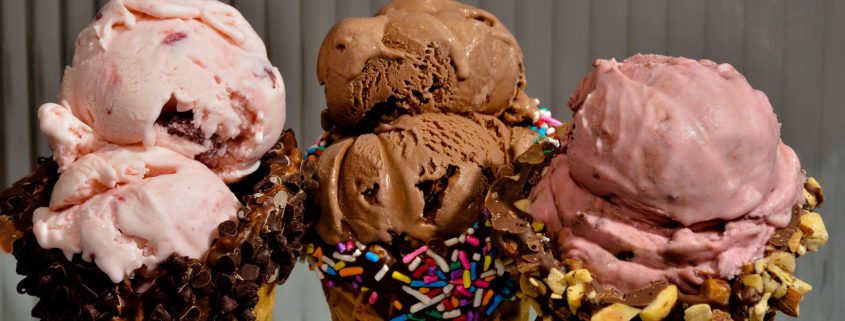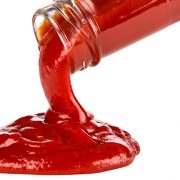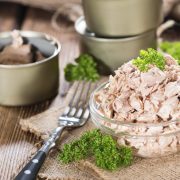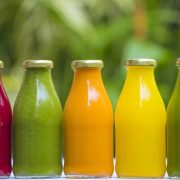Ice Cream Production
Ice cream is popular between children and adults. In the past, the use of ice cream was limited to hot seasons, but nowadays, every season, ice cream has its fans. It can be said that one of the successful production lines in the food industry is ice cream industry. Because not only the majority of people are interested in this delicious food, ice cream can be one of the few desserts that everyone uses in the domestic production of this product.
Ice Cream Definitions
You cannot say ice cream to any frozen liquid. In fact, ice cream has at least 10% milk fat. The amount of this fat can vary from 10 to 16 percent, which usually contains 14 percent milk fat. The greater the amount of fat gets, it helps in the form of ice cream and taste and the creaminess of it.
Most ice cream makers usually do add more than 16% fat in ice cream, because they raise the price and increase calories. Other desserts like frozen yogurt or low-fat ice creams are not ice cream at all. For example, frozen custard, which is a kind of frozen dessert with 1.4% egg.
Ice cream components are generally easy ingredients, but in fact the ice cream has a complex system. Ice cream is a substance that is gelatinous and suspended. This state comes from two substances that are often not mixed together.
In addition to milk fat, other ingredients such as non-fat milk packets, and water and sugar, as well as stabilizers, are used to stabilize the cream, making ice cream shape better. Although gelatin has always been used as stabilizer but these days, other materials such as plants are also used for this purpose. For some time, egg yolks were used for this purpose. Over time, manufacturers replaced plants with the chemical. Although stabilizers play a role in ice cream less than 1%.
Main ingredients in ice cream
1. Sweeteners
Sweeteners are used to provide the characteristic sweetness of ice cream. Sweeteners also lower the freezing point of the mix to allow some water to reamin unfrozen at serving temperatures. A lower freezing point makes ice cream easier to scoop and eat, although the addition of too much sugar can make the product too soft. Sweeteners used include sugar (sucrose) and corn syrups.
2. Fat
Milk fat provides creaminess and richness to ice cream and contributes to its melting characteristics. The minimum fat content is 10% and premium ice creams can contain as much as 16% milk fat. Sources of milk fat include milk, cream, and butter.
3. Milk solids except fat
The total milk solids component of ice cream includes both the fat and other solids. The other milk solids consist of the protein and lactose in milk and ranges from 9 to 12% in ice cream. The nonfat solids play an important role in the body and texture of ice cream by stabilizing the air that is incorporated during the freezing process. Sources of nonfat solids include milk, cream, condensed milk, evaporated milk, dry milk, and whey.
4. Stabilizers
Stabilizers are proteins or carbohydrates used in ice cream to add viscosity and control ice crystallization. Over time during frozen storage small ice crystals naturally migrate together and form larger ice crystals. Stabilizers help to keep the small crystals isolated and prevent the growth of large crystals, which causes ice cream to be coarse, icy and unpleasant to eat. Stabilizers used include alginates (carrageenan), gums (locust bean, guar), and gelatins.
5. Colorants
Colorants improve the color of the ice cream. Saffron can be mentioned from natural colorants.
6. Flavorings
A wide range of flavorings are used in ice cream. Flavorings include natural and artificial flavors, fruit, nuts, and bulky inclusions such as chocolate chunks and candies.
General Ice Cream Processing Steps
The following discussion provides a general outline of the steps required for making ice cream:
Step 1 in ice cream production line) Blending
The milk fat source, nonfat solids, stabilizers and emulsifiers are blended to ensure complete mixing of liquid and dry ingredients.
Step 2 in ice cream production line) Pasteurizing
At this stage, the resulting mixture is pasteurized. The pasteurization process is a biological control step that is based on the complete degradation of pathogenic bacteria. In addition, the pasteurization process reduces the number of corrosive microbes and, on the other hand, helps to hydrate some of the compounds, such as proteins and stabilizers. Pasteurization is done in two ways:
- Non-continuous pasteurization
- Continuous Pasteurization
Step 3 in ice cream production line) Homogenizing
After pasteurization, the mixture is homogenized, which reduces the amount of fatty blood cells in milk or cream. (Commonly used from two-step homogenization systems for mixture of ice cream.)
The homogenization process should be carried out at the same pasteurization temperature. Because of the high temperature, it is possible to break down the fatty blood cells in any compression and prevent the accumulation and clustering of fat. The optimum pressure varies according to the composition of the mixture, but in general, in the two-step homogenization at first step we have pressure of 2000-2500 psi and in second step we have pressure of 500-1000 psi, in the second step.
Step 4 in ice cream production line) Age the Mix
Ice cream mix is aged at 40°F (5°C) for at least 4 hours or overnight. Aging the mix cools it down before freezing, allows the milk fat to partially crystallize and the gives the proteins stabilizers time to hydrate. This improves the whipping properties of the mix.
Step 5 in ice cream production line) Add Liquid Flavors and Colors
Liquid flavors and colors may be added to the mix before freezing. Only ingredients that are liquid can be added before the freezing, to make sure the mix flows properly through the freezing equipment.
Step 6 in ice cream production line) Freeze
The process involves freezing the mix and incorporating air. Ice cream mix can be frozen in batch or continuous freezers and the conditions used will depend on the type of freezer. Batch freezers consist of a rotating barrel that is usually filled one-third to one-half full with ice cream mix. As the barrel turns, the air in the barrel is incorporated into the ice cream mix. Ice cream freezers designed for home use are batch freezers. Continuous freezers consist of a fixed barrel that has a blade inside that constantly scrapes the surface of freezing barrel. The ice cream mix is pumped from a bulk tank to the freezing barrel and the air is incorporated with another pump just before it enters the freezing barrel. The continuous freezing process is much faster than the batch freezing process.
Step 7 in ice cream production line) Add Fruits, Nuts and Bulky Flavorings (candy pieces, etc.)
Fruits, swirls, and any bulky type of flavorings (nuts, candy pieces, etc.) are added at this point. These ingredients cannot be added before freezing or they would interfere with the smooth flow of the mix through the freezer. The ice cream at this point is soft and it is easy to mix in the bulky flavorings so they are uniformly distributed throughout the ice cream. Mixing in bulky flavorings after freezing also prevents damage to the pieces and allows them to remain whole or in large chunks.
Step 8 in ice cream production line) Package
As desired, depending on the product.
Launching ice cream production line
If you want to enter the food industry and you are interested in producing a product that is not limited for any ages or any place, we offer you launching ice cream production line.
Our experts at the Shabchare center are ready to provide the services you need.








Leave a Reply